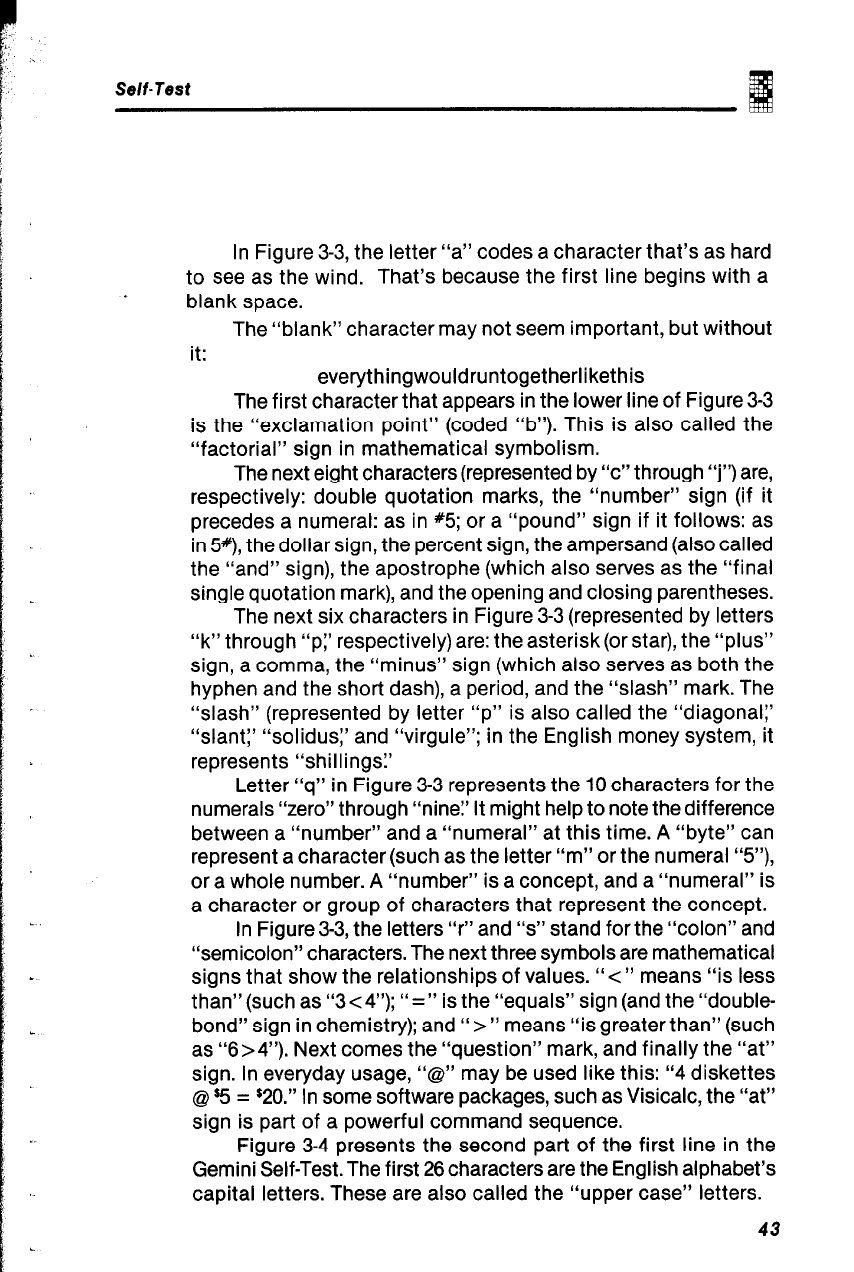
Se/f-Test
In Figure 3-3, the letter “a” codes a character that’s as hard
to see as the wind. That’s because the first line begins with a
blank space.
The “blank” character may not seem important, but without
it:
everythingwouldruntogetherlikethis
The first character that appears in the lower line of Figure 3-3
is the “exclamation point” (coded “b”). This is also called the
“factorial” sign in mathematical symbolism.
The next eight characters (represented by “c” through “j”) are,
respectively: double quotation marks, the “number” sign (if it
precedes a numeral: as in #!5; or a “pound” sign if it follows: as
in W), the dollar sign, the percent sign, the ampersand (also called
the “and” sign), the apostrophe (which also serves as the “final
single quotation mark), and the opening and closing parentheses.
The next six characters in Figure 3-3 (represented by letters
“k” through “pi’ respectively) are: the asterisk(or star), the “plus”
sign, a comma, the “minus” sign (which also serves as both the
hyphen and the short dash), a period, and the “slash” mark. The
“slash” (represented by letter “p” is also called the “diagonal:’
“slant:’ “solidus:’ and “virgule”; in the English money system, it
represents “shillings?
Letter “q” in Figure 3-3 represents the 10 characters for the
numerals “zero” through “nine:’ It might help to note the difference
between a “number” and a “numeral” at this time. A “byte” can
represent a character (such as the letter “m” or the numeral ‘?I”),
or a whole number. A “number” is a concept, and a “numeral” is
a character or group of characters that represent the concept.
In Figure 3-3, the letters “r” and “s” stand for the “colon” and
“semicolon” characters. The next three symbols are mathematical
signs that show the relationships of values. “cl’ means “is less
than”(such as “3~4”); “=I’ is the “equals” sign (and the “double-
bond” sign in chemistry); and I‘>” means “is greater than” (such
as “6>4”). Next comes the “question” mark, and finally the “at”
sign. In everyday usage, “@” may be used like this: “4 diskettes
@ $5 = $20.” In some software packages, such as VisiCalc, the “at”
sign is part of a powerful command sequence.
Figure 3-4 presents the second part of the first line in the
Gemini Self-Test. The first 26 characters are the English alphabet’s
capital letters. These are also called the “upper case” letters.
43


















